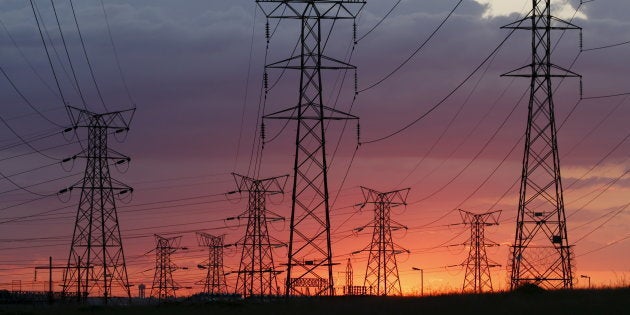
The article published in the Journal of Economics and Behavioural Studies 2016 [vol. 8, no. 6] by M. Maphosa and P. Mabuza of Nersa [National Energy Regulator of South Africa], truly shed some light on the regulator's attitude to dealing with considerations of pro-poor tariff policy versus that of cost-reflective tariffs in South Africa's Electricity Supply Industry [ESI].
It is safe to say that the debate that the authors hint at is one that has clearly evolved to have a much less binary articulation than presented, and has emerged to be more a middle of the road solution in terms of appropriate policy. Instead of seeing pro-poor tariffs and cost-reflective tariffs as mutually exclusive, there is enough evidence to conceptualise the positions as mutually reinforcing in a changing world.
We are now in a world of multiple systems and processes interacting with each other with greater complexity, therefore the world of firewalls and binary distinctions is long gone. It is clear that in South Africa's ESI, private sector investment is required but it is a controversial and contested issue as what form the investors should take.
The assumption in most cases is that private sector investment will lead to eventual price reduction through competition and innovation. However, the proviso is that the ESI must move, be it gradually or immediately, to cost-reflective tariffs for such to happen. In a country such as South Africa where cross-subsidisation is a tool to ensure not only access to electricity but also the security of supply, this idea seems a bit odd.
The fact is that the price paid in South Africa for electricity is distorted not only by cross-subsidisation but also by fiscal incentives, grants and waivers etc. As a result, the initial position of the government was -- and one can maintain still is -- that pro-poor tariffs are a means to ensure universal access at a reasonable price. The main issue here is that the authors view the two positions as polar opposites.
The other hidden nuance is that the ESI would still be powered by the darling of industrialisation: cheap coal. As mentioned before, the ESI is undergoing massive changes from disruptive technologies, which are no longer seen as temporary solutions but are now, in fact, real-time substitutes both in utility and price as compared to traditional technologies [coal and nuclear].
The entire country [particularly industry] has benefited from specially negotiated [electricity] prices, which in many instances were below the cost of production.
The fact is that South Africans cannot pay below cost for electricity anymore. In fact, there is a strong argument that cost-reflective tariffs are far more advantageous than universal artificial suppression of prices. The ESI must internalise all costs associated with its functioning regardless of technology and come out with a natural price. The impact on each consumer class would then be evaluated on average price elasticity [particularly in the residential sector] in order to determine which class of customers require further protection and or subsidisation, which would result in a nominal price.
At the outset, the aim is to get the real price with all considerations taken into account. The assertion that households -- particularly low-income households -- have benefited from low electricity prices is valid but not in its entirety. In fact, the entire country [particularly industry] has benefited from specially negotiated prices, which in many instances were below the cost of production.
The point is that there is recognition that industry received special incentives in order to spur on investment and production, however, the result is that the underlying costs of production were never met by the price paid for the service.
This was sustained over a significant period of time and this mismatch became a characteristic of the ESI in South Africa. When realisation turned into rectification, the newly established prices were not even vaguely reflective of inflation pressures or regulatory sales volumes as a determinant of ESI average prices across all classes.
This was and is at the detriment of the residential sector, which simply cannot absorb well-above inflationary increases in electricity tariffs in order to cover negotiated price shortfalls. In no way do any of the customer classes in ESI pay the actual cost of supply. The consequence is perverse/reverse subsidisation, which is an unintended policy outcome.
In order to highlight the low hanging fruits of a hybrid position, it is clear that utilities need to have a reasonable return or margin, which is fair in the context of a competitive market. However, a price that encapsulates a reasonable return is one that must be cost-reflective as a first priority. The impact on low-income groups and vulnerable customers is then addressed only as a secondary consideration.
As the price for electricity is unreflective of true costs, it means all other associated and related activities are not valued correctly and subsequently are compensated incorrectly.
One would argue that the rate of [reasonable] return must be last on the list. However, in this day and age the scales are in reverse, and returns are the foremost priority -- even in a vertically integrated supply industry. The actual dynamics at play are whether the utility can place its need for returns above all else, while at the same time being allowed to under-estimate actual supply costs in order to serve captive customers.
At this point is important to note that 'cost reflective tariffs' are not only about the technical aspects of supplying electricity. Importantly, truly cost-reflective tariffs would internalise both negative and positive externalities, as well as the benefits of indirect socio-economic activities. As the price for electricity is unreflective of true costs, it means all other associated and related activities are not valued correctly and subsequently are compensated incorrectly.
This is reflected in Eskom's desire to cut costs wherever possible in order to maximise the rate as well as the percentage of returns. Cutting costs has already yielded bad results for the ESI and it is clear that the reasonable return paradigm has now taken hold, to such an extent that the regulator no longer exercises its mind as to whether or not returns for a given period are even necessary.
South Africans have to pay the costs of producing, transmitting and distributing electricity. In pursuit of government's important socio-economic objectives, the price for specific groups can be adjusted to an amount that is affordable and sustainable, while ensuring that cost-reflective tariffs are attained for the remaining groups, but at a pace that is affordable.
The reasonable return motive is not about paying back loans and decreasing liabilities, it is about the net cash flow of the utility. This must cease to be the primary goal of the ESI. A cost-reflective tariff has all the costs included in order to deliver power to the point of demand. This means an accurate valuation and compensation for labour is necessary, the true costing of means of production [including maintenance], water costs and, amongst other expenses, loans and liabilities etc.
Indeed, it also includes the negative and positive externalities, and it is not good enough to pursue cost-reflective tariffs that simply ignore externalities. It is possible to promote the affordability of electricity for vulnerable customer classes with specific measures to ensure that these groups are protected, while also shifting towards cost-reflective tariffs at a pace that is affordable.
Presenting this as an 'either/or' decision is a misrepresentation. It is clear that the ESI in South Africa needs to be upgraded, but this should never come at the cost of South Africa's most vulnerable citizens.
